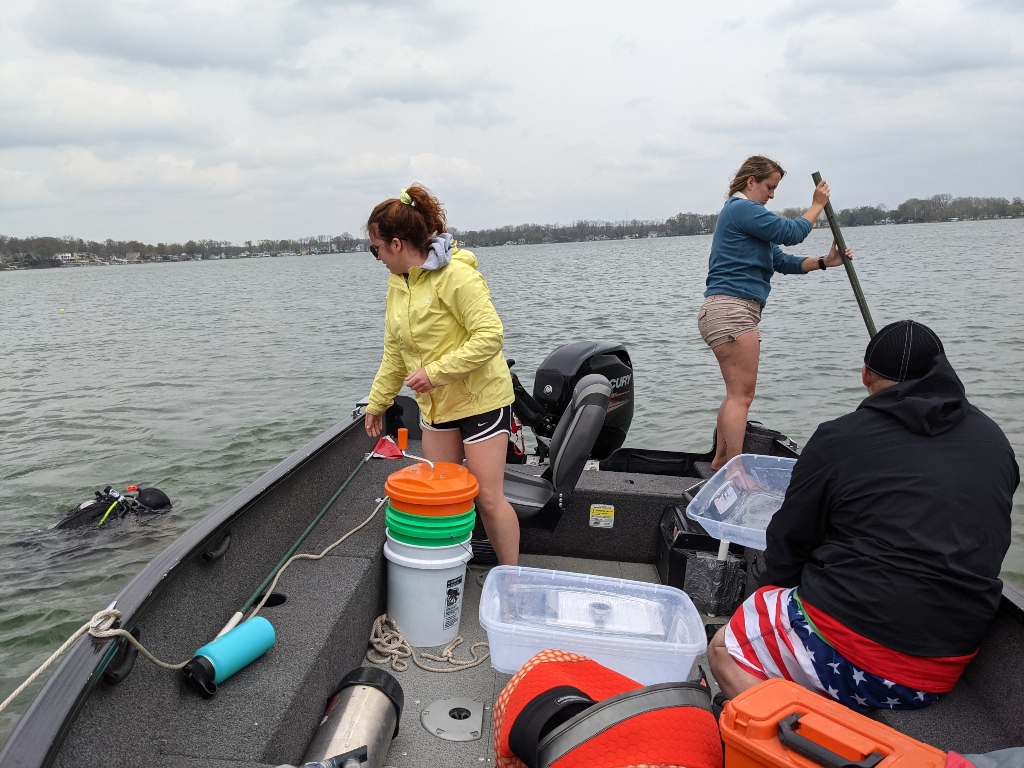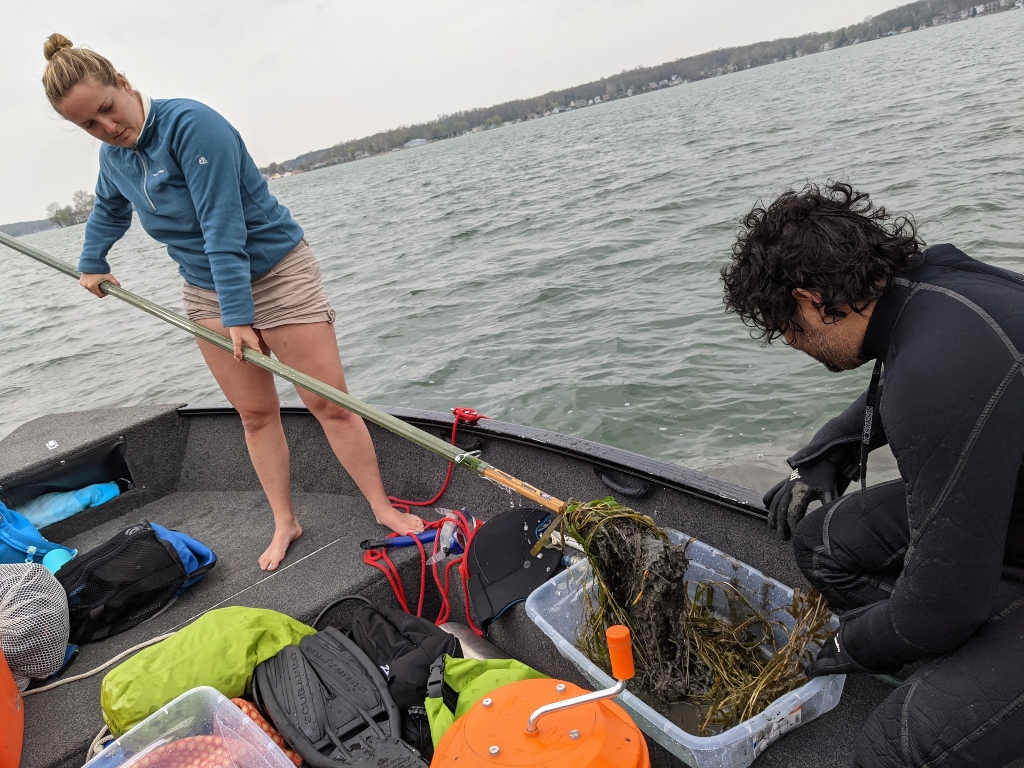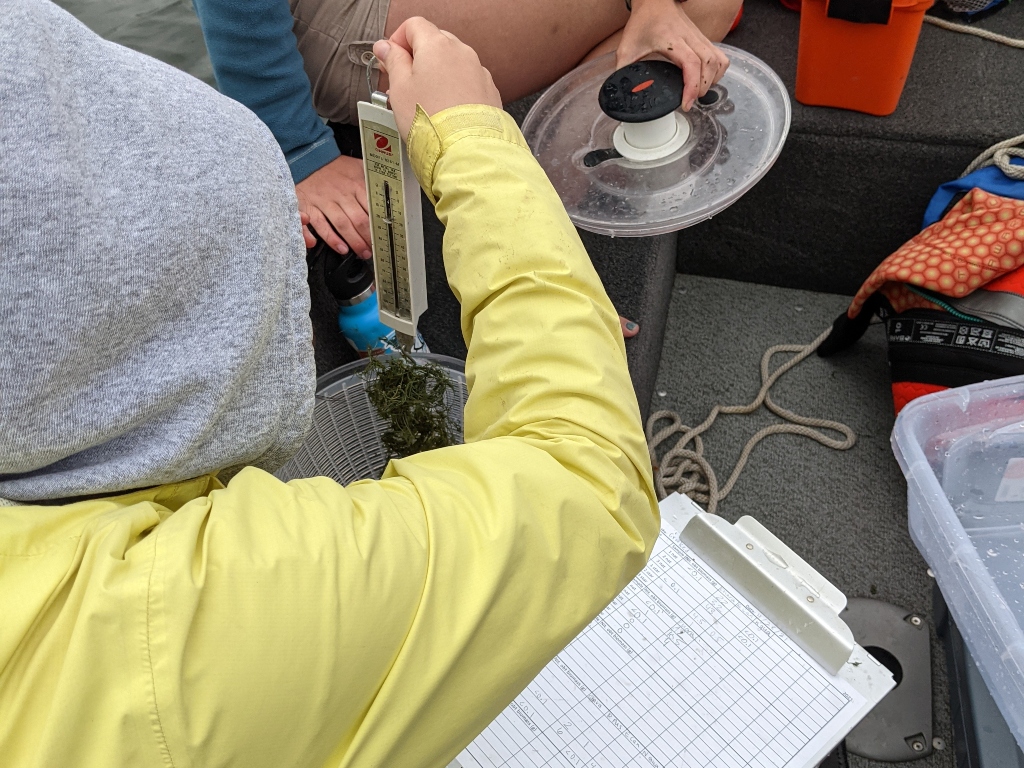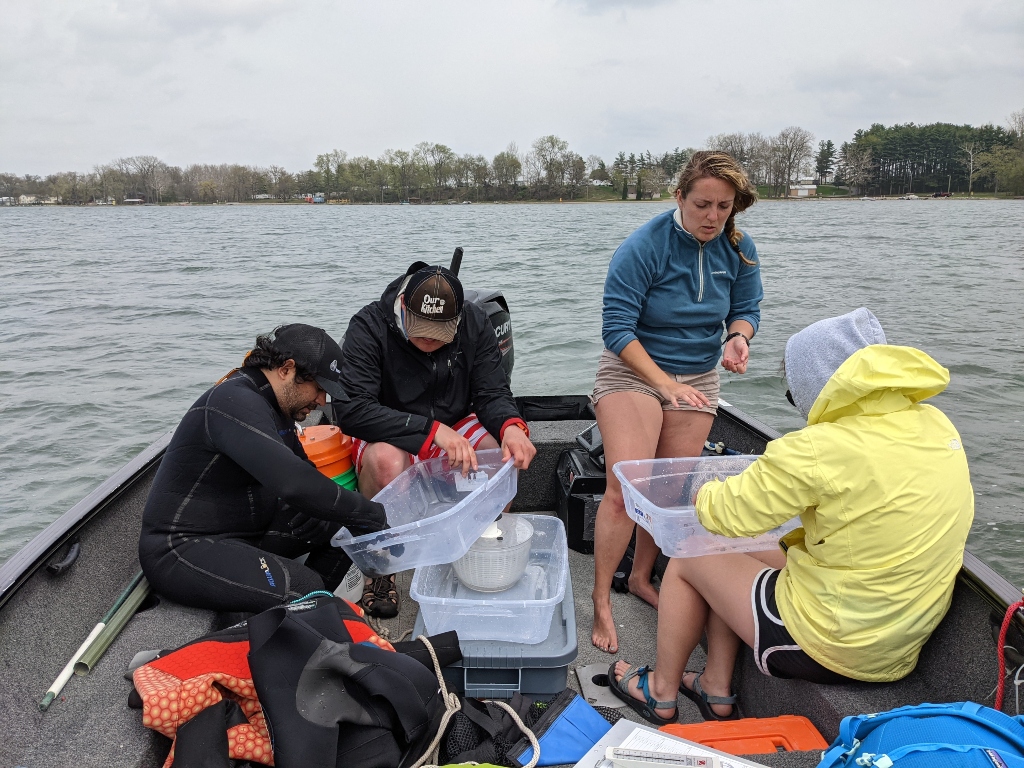The research team is looking at starry stonewort across temperature and latitude to see how it proliferates under different circumstances. They are also getting information from stakeholders on how they view starry stonewort and the management options associated with it.
The starry stonewort sampling is happening in nine lakes across Minnesota, Wisconsin, and Indiana (three lakes from each state). In each lake, the researchers are placing markers to permanently identify five sets of 30-meter long transects that cross from a section that is 100 percent starry stonewort to 100 percent native species. They then follow the transects and inventory the species every meter to see changes in the plant community in the transition zone and how far the alga moves each year.
The data includes how many species are present, which species are present, the meters starry stonewort is present, and starry stonewort biomass. Latitude and temperature are also included.
The data will be in spreadsheets.
The data will be hosted on a public website once the research is completed. The team will also look into creating a model with the data so managers and researchers can look at different scenarios of starry stonewort invasion under different environmental conditions and management strategies.







